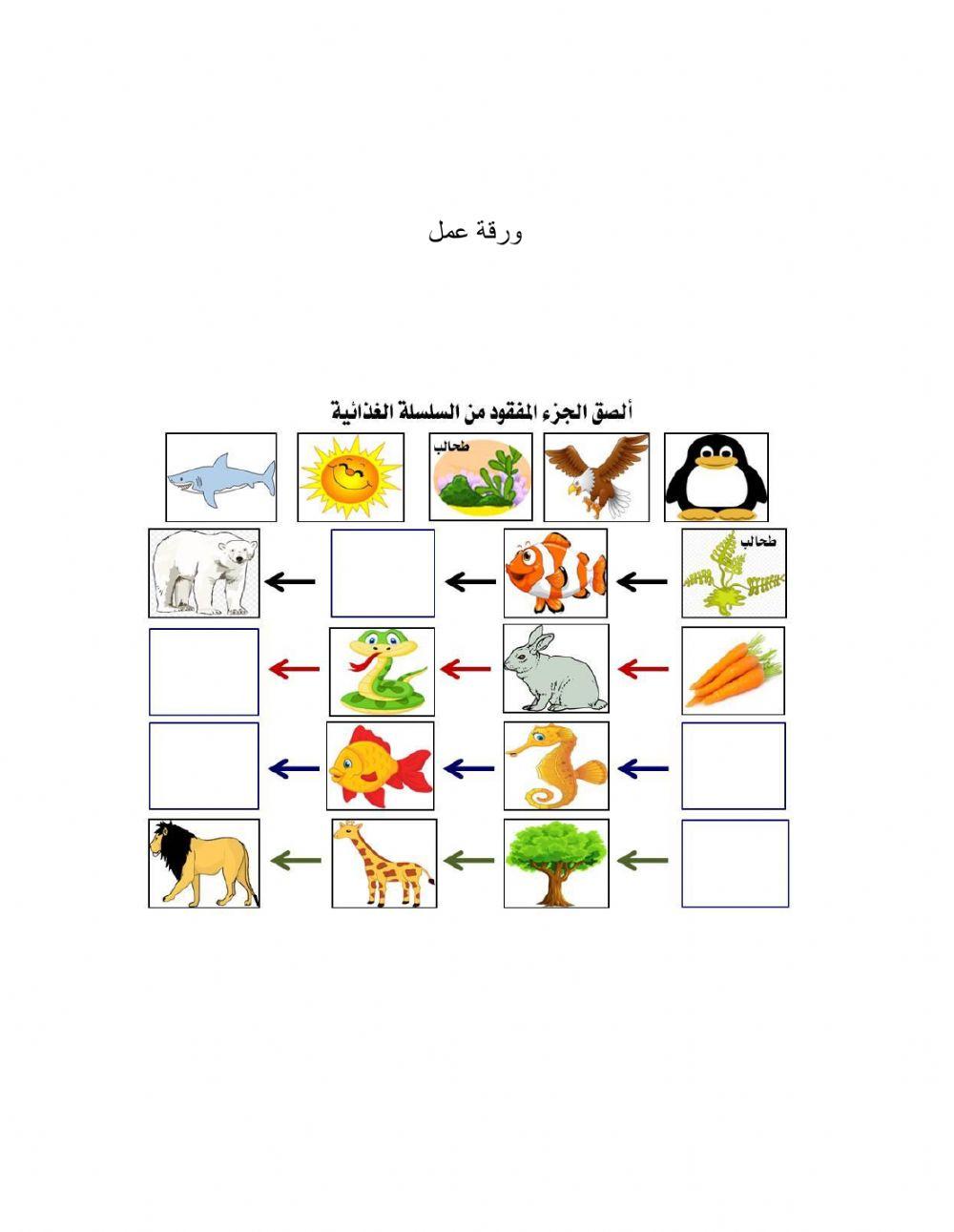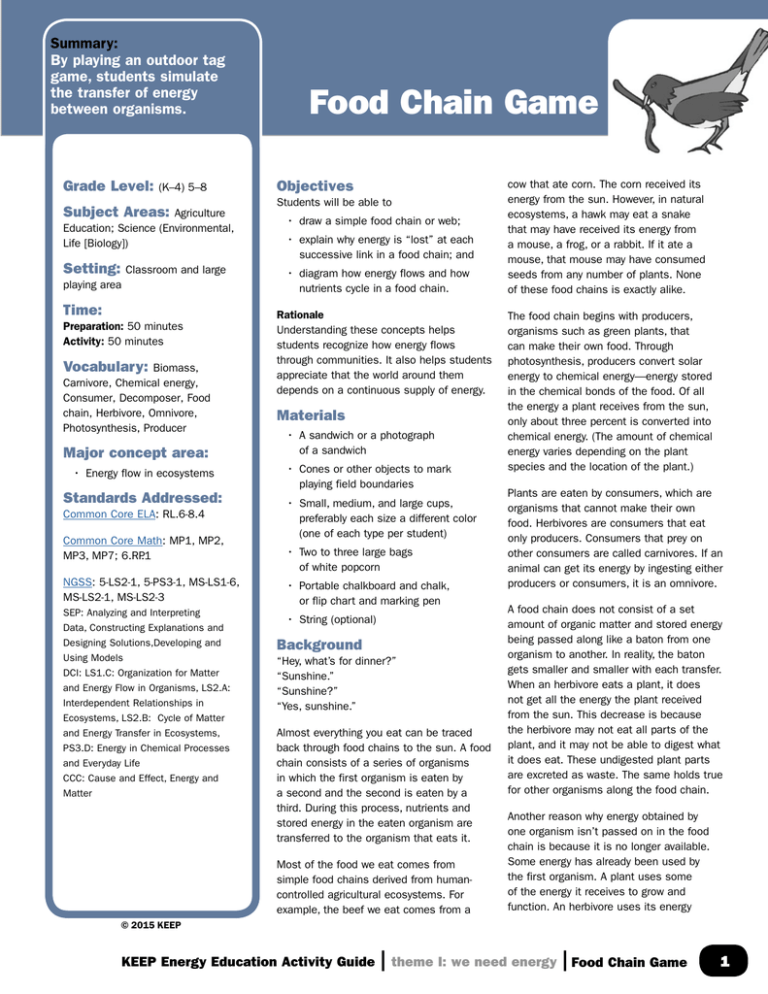foodchaingame33 Biology Diagrams The Food Chain Gizmo shows a food chain with hawks, snakes, rabbits, and grass. In this simulation, the hawks eat snakes, the snakes eat rabbits, and the rabbits eat grass. 1. Producers are organisms that do not need to eat other organisms to obtain energy. A. Which organism is a producer in this food chain? B.

The interrelationship between species in the river, wetland, grassland, and woodland habitats of the Platte River prairie ecosystem is a complex, dynamic food system. By exploring food chains and food webs, you will discover how energy is transferred from one organism to another. All living things are connected. Food Chain In this ecosystem consisting of hawks, snakes, rabbits and grass, the population of each species can be studied as part of a food chain. Disease can be introduced for any species, and the number of animals can be increased or decreased at any time, just like in the real world. Food Chain Game plants. None of these food chains is exactly alike. The food chain begins with producers, organisms such as green plants, that can make their own food. Through photosynthesis, producers convert solar energy to chemical energy—energy stored in the chemical bonds of the food. Of all the energy a plant receives from the

Science Trek Biology Diagrams
use the Food Chain Examples worksheet. 6. Learn more about how to switch costumes in the Scratch™ interface using the Changing Costumes worksheet. 7. Student groups will demonstrate their own fixed food chain. They can also compare their simulation to the Correct food chain project file by uploading FoodChain_Fixed. sb3. Food Chain Game - Food chains come to life: when a chain is correctly put together, it turns into an animated working chain! Possible Advertisement For help with the food chain, visit these pages. Lessons > Food Web > Step 1. First you'll run a less than "real-life" scenario. Choose only one organism from each trophic level and make sure that the food chain goes in a straight line from one trophic level to the next, i.e., Herbivore A eats Plant A, Omnivore A eats Herbivore A, and the Top Predator eats Omnivore A.

Using the Fixed food chain project file and the Food Chain Examples sheet, students will now use new organisms to create a totally new food chain in a different ocean ecosystem and represent it in the food chain simulation. To do this, students will create new pictures of each organism using the Scratch™ interface. What is a Food Chain? All living things need food to survive. A food chain shows how each living thing gets food, and how nutrients and energy passes on from creature to creature, or from environment to creature. Below is a basic example of a food chain: The Elements of a Food Chain. The Sun is usually the beginning of most food chains.

Student Exploration: Food Chain ... Biology Diagrams
For seven different food chains, place each part into its correct spot. When the chain is completed, it will come to life and you can watch the food chain in action! Play. Animal Diets. You know that lions are carnivores, but what about spiders and frogs? See if you can identify each animal as a carnivore, herbivore, or omnivore.

